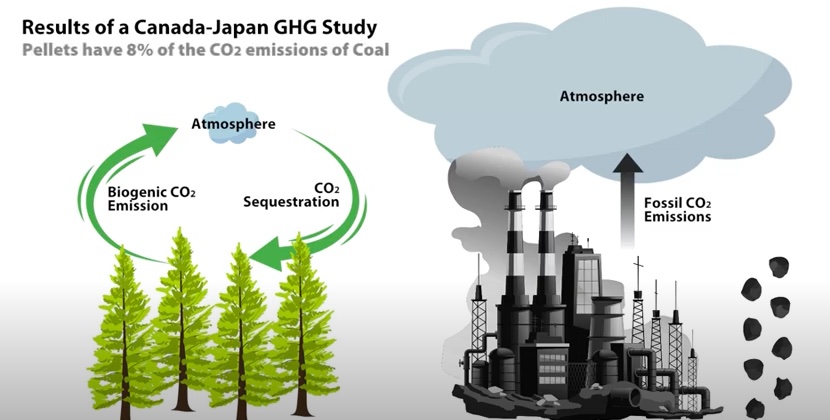“One of the biggest contributions of the wood pellet industry, in terms of climate change solutions, is that this industry is helping us move away from fossil fuels and transitioning energy production and energy consumption away from fossil fuels,” says Fahimeh Yazden Panah, Ph.D., director of research and technical development, Wood Pellet Association of Canada (WPAC).
Panah and other on-the-ground sustainability experts make the case for wood pellets in Contributing to a Low Carbon Economy, one of five videos in the Power of Pellets series, produced by WPAC with funding from Forestry Innovation Investment. The experts in the video agree that to fully understand the critical role wood pellets play in reducing greenhouse gas emissions it is important to look at the entire lifecycle of the production of energy, “As the forest grows it continues to absorb all the carbon that is being emitted and that makes wood pellets a green option,” adds Panah.
“Wood pellets are a vital source of energy in a low carbon economy,” says Gary Bull, Ph.D., professor, Department of Forest Resource Management at the University of British Columbia who points to life cycle analysis as an important tool to demonstrate that “Pellets are more environmentally friendly than coal from the greenhouse gas point of view.”
A comprehensive study was conducted by Laborelec on behalf of WPAC members and with funding from the Canadian government. It measured GHG emissions for 17 wood pellet operations in North America to the delivered product in Japan, which showed GHG emissions from wood pellets are just eight per cent of those from coal.
“Ultimately, you need to understand what your GHG emission profiles are in order to demonstrate that wood pellets being used to generate energy meet and contribute to a positive climate solution,” states Joseph Aquino, registered professional forester, director of sustainability, Drax.
“There is a lot of demand for wood pellets around the globe and wood pellets are helping different countries meet their climate change targets,” concludes Panah.
Watch the video below:
This article was originally published by Canadian Biomass, a national media brand providing coverage of the emerging biomass, bioenergy and bio-products markets. See CanadianBiomassMagazine.ca for more information.

